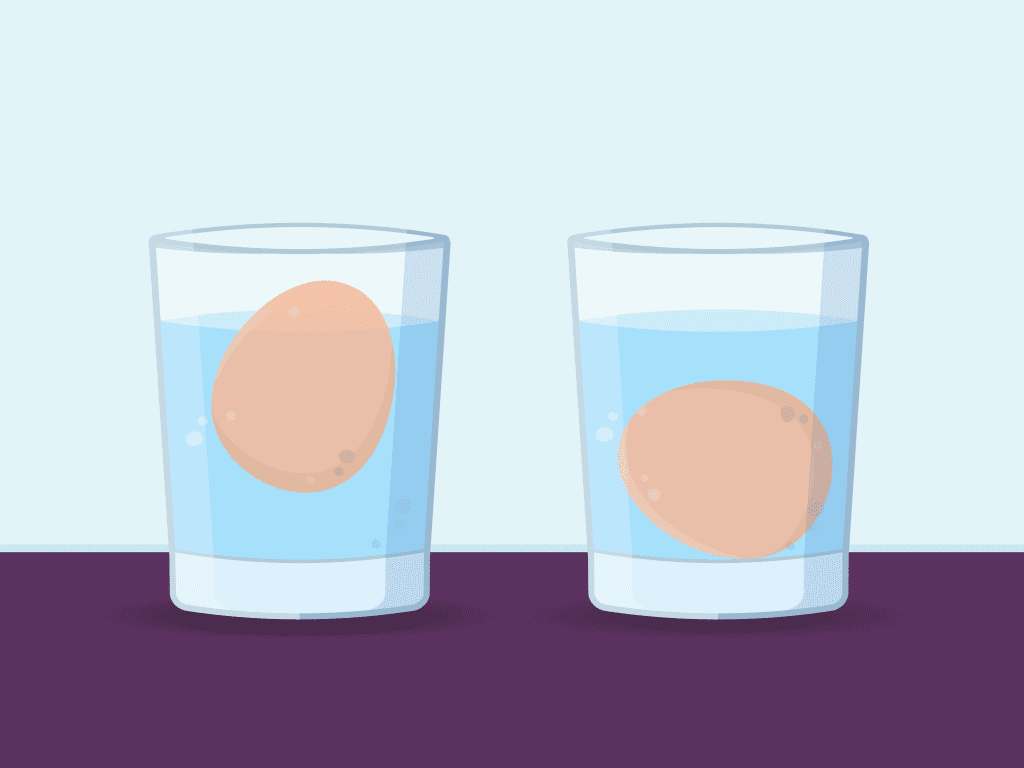In today’s world, where most of our groceries come pre-packaged and ready for consumption, it’s easy to overlook the importance of checking the freshness of our food, especially something as essential as eggs. Eggs are a versatile ingredient and a kitchen staple, but using a stale egg can ruin your dish and even pose health risks. As more people reconnect with traditional cooking and kitchen wisdom, reliable methods for testing egg freshness are gaining popularity. One such method is Nana’s simple trick, a timeless technique that ensures you’re always using the freshest eggs in your meals.
Why Egg Freshness Matters

Fresh eggs are essential for both culinary and health reasons. When it comes to cooking, fresh eggs deliver superior taste and texture, giving you fluffier omelets, more stable meringues, and perfect baked goods. From a health perspective, consuming fresh eggs helps you avoid foodborne illnesses like salmonella, which is often associated with older, contaminated eggs. Knowing how to tell if an egg is fresh can prevent these culinary and health disasters, making your time in the kitchen safer and more enjoyable.
Nana’s Simple Egg Freshness Test
Nana’s trick for determining egg freshness is as simple as it is effective. It requires no specialized tools or gadgets—just a bowl of water. This time-honored technique is based on the natural changes that occur inside an egg as it ages, and with nothing more than water, you can easily determine if your egg is fresh, slightly aged, or past its prime.
How It Works: The Water Test
Nana’s method involves placing an egg in a bowl of water to observe its behavior. Here’s how you can perform the test at home:
- Fill a Bowl with Cold Water: Use enough water to fully submerge the egg.
- Place the Egg in the Water: Gently drop the egg into the bowl and watch what happens.
- Interpret the Results:
- Fresh Egg: If the egg sinks to the bottom and lies flat on its side, it’s very fresh.
- Slightly Aged Egg: If the egg sinks but stands upright on the bottom, it’s still safe to eat but not at its freshest. Use these eggs for dishes where freshness is less critical, like hard-boiled eggs.
- Old Egg: If the egg floats to the top, it’s no longer fresh and should be discarded.
This quick and easy test takes mere seconds and gives you a clear answer about the freshness of your egg.
Why Nana’s Method is So Effective
The science behind Nana’s trick lies in the anatomy of the egg and how it changes over time. Fresh eggs contain a small air cell, but as they age, moisture inside the egg evaporates through the porous shell, and the air cell expands. This increased air pocket makes the egg more buoyant, which is why it starts to float in water as it ages. Fresh eggs are denser and therefore sink, while older eggs become more buoyant due to their larger air cell. It’s basic physics in action, and it’s a foolproof way to gauge an egg’s freshness with a simple visual cue.
Other Methods for Testing Egg Freshness
While Nana’s water test is one of the simplest ways to check egg freshness, there are a few other methods you can try:
- The Candling Test: This technique, commonly used in commercial egg production, involves holding a light source up to the egg to view its internal structure. However, it requires some experience and isn’t as practical for everyday use.
- The Crack Test: Crack the egg open and inspect the yolk and egg whites. Fresh eggs have a well-rounded yolk and thick, slightly cloudy whites. Older eggs have a more runny texture and flatter yolks.
- The Shake Test: Hold the egg close to your ear and give it a gentle shake. Fresh eggs will be silent, while older eggs may slosh slightly due to the breakdown of the egg’s structure.

Though effective, these methods can be trickier to perform or require more attention to detail. Nana’s water test remains the easiest and most accessible way to check freshness at home.
Understanding the Science Behind Egg Freshness
Eggs are remarkable because they contain a naturally protective shell that helps preserve their contents. However, the shell is porous, which allows air to enter and moisture to escape over time. This exchange is why older eggs have larger air pockets and a different internal structure compared to fresher ones. Inside the egg, proteins also start to break down, causing the egg white to thin and the yolk to flatten. Nana’s test leverages these natural changes to offer a quick visual cue that tells you if the egg is still good to use.
Common Myths About Egg Freshness
When it comes to eggs, there are quite a few misconceptions:
- Cloudy Whites Mean Spoilage: This isn’t true! Cloudy egg whites indicate a fresh egg due to the presence of carbon dioxide. Clear whites typically appear in older eggs.
- Eggs with Cracks Should Always Be Discarded: While a cracked egg can be more susceptible to bacterial contamination, minor cracks may not always indicate spoilage. Just be cautious with storage and use.
- All Eggs with Spots are Bad: Blood or meat spots in eggs are harmless and safe to consume. These spots result from minor blood vessel ruptures during egg formation and are not indicators of spoilage.
Understanding the real signs of freshness can help you make better choices in the kitchen and avoid unnecessary waste.
Nana’s Trick: A Time-Honored Tradition for Safe Cooking

Nana’s water test is more than just a way to check egg freshness—it’s a tradition that reflects the simplicity and wisdom of past generations. By taking just a moment to test your eggs, you’re embracing a time-honored method that ensures you’re using quality ingredients for your meals. Plus, with all the health and safety benefits that come with fresh eggs, you’re setting yourself up for success in the kitchen.
Conclusion: Embrace Nana’s Simple Wisdom in Your Kitchen
In a world filled with complex gadgets and high-tech kitchen tools, it’s refreshing to rely on something as simple as a bowl of water to check the quality of your eggs. Nana’s method is proof that sometimes the best tricks are the simplest ones. Not only does this technique offer a reliable way to test egg freshness, but it also connects us to a piece of culinary heritage that’s been passed down through generations.
The next time you’re about to cook, take a few extra seconds to give Nana’s trick a try. You’ll not only gain peace of mind, but you’ll also appreciate the simple, time-tested wisdom of a method that’s as effective today as it was back then. So grab a bowl, fill it with water, and let Nana’s easy trick guide you to fresher, safer eggs in the kitchen.


